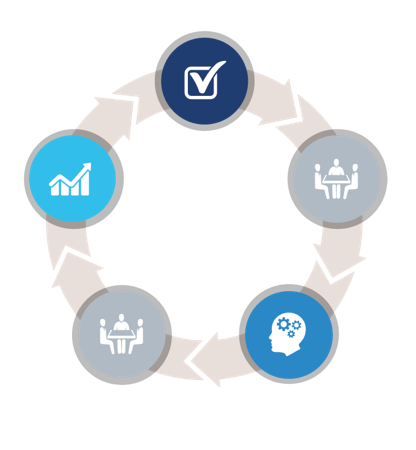Performance Reviews are a thing of the past, here’s why.
Engagement - November 13, 18 - Bri Newman
If you are one of the dealerships who hold annual performance reviews it might be time to reconsider that practice. And, if you haven’t had a chance to formalize performance reviews not to worry the below post will outline how you can get started. Keep reading you’re in the right place!
First let’s review why the old method of annual reviews is not effective for the workplace of the 21st century. First and foremost, performance reviews typically are attached to an expectation of a compensation increase. For the employee that often means X and for the employer it means Y. If those expectations don’t align someone leaves the conversation frustrated, typically the employee and this leads to disengagement. Next, unless your management team is meticulous about documenting employee wins and opportunities throughout the year chances are the review will be focused on your managers most recent memories rather than your employee’s perception of the whole year. Lastly, if we are waiting to learn about our employees’ goals or their feedback on the organization until review time we’ve done a disservice to them, to our management team and ourselves.
So what is a more effective and productive way to manage feedback in the workplace? At The Minery we call it the Continuous Feedback Model. In theory the principles are simple but with any strategy implementation it requires change management and a steadfast commitment to that change.

The Continuous Feedback Model
1. Set the expectations and behaviours: with any good performance management strategy your targets and expectations must be well defined. For instance, asking a Sales Consultant to sell 15 vehicles per month is a vague goal. Setting expectations on the # of contacts, follow ups, test drives etc. required to achieve that target are specific expectations that support your goal setting and your ability to gather insights to support improvement
2. 1st Monthly Check In:“I’m constantly checking in with my team, we review our targets each month and discuss why we didn’t hit them or why we did”. Absolutely that conversation is important, but you have to take it one step further, review each expectation/behaviour and scale your employee (I like 1-3 stars – 1: needs work, 2: progressing 3: achieved). On top of that have you employee scale themselves, having an online tool or way to track this definitely helps but a simple email to the employee asking for their rating suffices. Meet with each of your employees and compare those results what did you rate them vs how they rated themselves. For any items rated 1 or 2 discuss an action item which should be documented. Don’t forget to celebrate the wins as well, catch your people doing things right!
3.Work on the Action Items: Like any diet or exercise plan commitment to action is imperative, you and your employee agreed to tackle some action items so hold your employee accountable. Coach them along the way in a candid and genuine way. Its a quick “hey we agreed that you wanted to improve X behaviour and I’m here to help that happen, here’s what I observed, here’s how you could have done that a bit differently.”
4. Monthly Check Ins: Your 2nd monthly check in and beyond will follow the same format as above the only difference is now you have action items to review. Discuss with your team what else they need from your as their leader to accomplish or achieve those action items. Also, these are great moments to gather their insights as well… “What has changed? How has this impacted your results? How is it feeling?”
5. Formal Evaluation: If you’ve successfully completed steps 1-4 on a consistent and regular basis this last piece is simple. I’d suggest this happens on bi-annual basis, having collected and met with your team on a monthly basis you now have 6 or 12 months of checks in. Your formal evaluation can now be more focused on if your team has been able to implement action items, if trends are coming up or if some accountabilities need to be tweaked. Use the “formal evaluation” to set bigger goals with your team. You might discuss growth paths or professional development opportunities based on what’s been collected throughout the check ins
In order to successfully implement the above, you’ve got to get your management team onboard and in some cases you may need to hold their hands, being a great Manager may be new to them. To start the process my recommendation is build your accountabilities and behaviours for your management team and implement the above 5 steps with them first, once they see the value in the process they are more likely to buy into the approach. After you’ve implemented ensure that its happening and celebrate your wins. On a larger scale this can be tedious but absolutely necessary to ensure it becomes part of your culture.
Interested in learning more on the continuous feedback model and how to implement in your store? Feel free to reach out!
Shift from being reactive to intentional...
Find out what we can do for you today.

